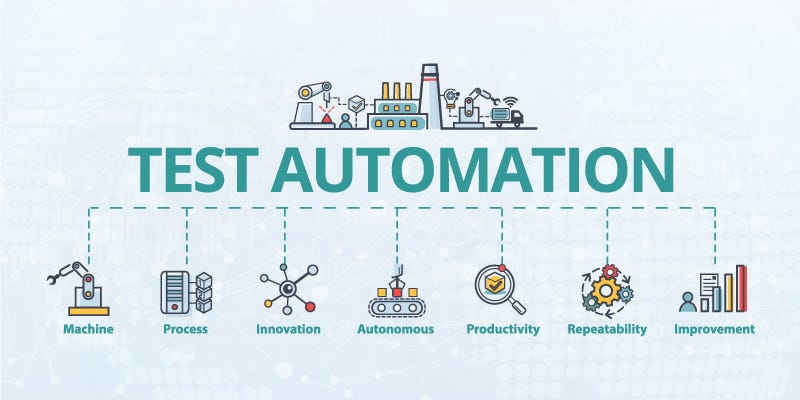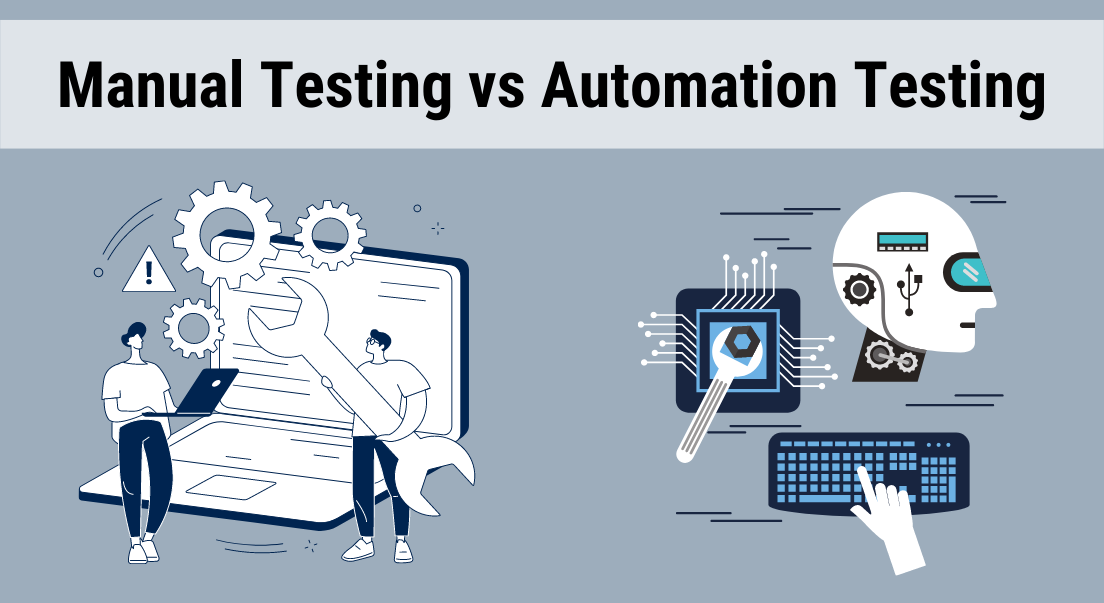Reliable Automation Testing: Enhancing Software Program Integrity and Rate
Reliable Automation Testing: Enhancing Software Program Integrity and Rate
Blog Article
From Guidebook to Automated Screening: A Comprehensive Overview to Transitioning Efficiently and Successfully
In the world of software program testing, the shift from manual to automated processes has actually come to be a significantly essential change for companies seeking to enhance efficiency and precision in their screening techniques. As modern technology proceeds to development, the requirement for effective and smooth computerized screening techniques has never been extra important. The journey from manual to automated testing is not without its obstacles, but when come close to purposefully and with a clear strategy in mind, the benefits can be substantial - automation testing. In this thorough overview, we will explore vital actions and factors to consider vital for a successful change, from the first choice of devices to the assimilation of automation into existing workflows. Keep tuned to discover the understandings that will certainly help lead the method for a smoother and much more reliable screening process.
Benefits of Automated Testing
Automated screening provides countless advantages, boosting effectiveness and accuracy in software program growth processes. One main benefit is the considerable reduction in testing time. Automated tests can be run simultaneously on numerous devices and operating systems, drastically speeding up the testing stage contrasted to hand-operated testing. This boosted performance enables faster comments on the quality of the software application, enabling programmers to recognize and resolve issues quickly.
Furthermore, automated testing guarantees a higher level of accuracy in discovering flaws. Given that automated examinations follow predefined scripts, human error is decreased, leading to more reliable test outcomes. Consistency in screening is also improved, as automated tests implement the same actions specifically each time they are run. This consistency is vital in guaranteeing that all performances of the software program are completely examined, lowering the chance of undiscovered insects sliding with to manufacturing.
Selecting the Right Devices

To start with, analyze your objectives and demands. Comprehend the range of your job, the innovations involved, and the skill set of your team. This analysis will certainly aid you establish the attributes and capacities you need in your testing tools.
Secondly, take into consideration the compatibility of the devices with your existing systems and procedures. Seamless combination with your present software application development lifecycle is necessary to guarantee a smooth change to automation.
Additionally, evaluate the scalability and flexibility of the devices. As your testing needs evolve, the tools should have the ability to adapt and fit modifications properly.
Last but not least, aspect in the support and community around the tools. Robust support and an energetic individual community can provide valuable resources and aid when executing automated testing. By meticulously considering these facets, you can select the right devices that straighten with your demands and established the stage for an effective change to automated testing.
Creating Effective Test Manuscripts

When crafting examination scripts, it is necessary to think about the specific demands of the software being checked and ensure that the manuscripts address all important performances. Descriptive and clear calling conventions for examination scripts and test instances can enhance readability and maintainability. Furthermore, incorporating error handling devices within the test scripts can assist in identifying and dealing with concerns promptly.
Moreover, arranging test manuscripts into modular components can enhance reusability and scalability, reducing redundancy and enhancing effectiveness in examination manuscript maintenance. Routine evaluations and updates to examine scripts are important to equal advancing software requirements and performances. By adhering to these concepts, testers can create efficient and robust examination manuscripts that add considerably to the success of automated go to this site screening procedures.
Integrating Automation Into Workflows
Efficient integration of automation tools into existing workflows improves processes and improves performance within software program growth cycles. When including automation right into operations, it is crucial blog to identify repetitive jobs that can be automated to conserve time and lower human mistake. By effortlessly incorporating automated testing tools like Selenium or Appium into the software development lifecycle, teams can attain faster responses on code adjustments, causing quicker insect detection and resolution. This integration permits continuous screening throughout the advancement process, guaranteeing that any concerns are determined beforehand, leading to higher software program top quality. Furthermore, automation can be used to trigger examinations immediately after each code commit, providing prompt validation and liberating testers to concentrate on more complex circumstances. Appropriate integration of automation devices needs collaboration in between advancement, screening, and operations teams to establish a unified process that enhances performance and efficiency in delivering high-quality software.
Guaranteeing a Smooth Change
Successfully transitioning to automated screening involves meticulous preparation and cautious implementation to minimize disturbances and make the most of performance in the software program growth procedure - automation testing. To make certain a smooth transition, it is important to begin by carrying out a detailed analysis of the current screening processes and determining areas where automation can bring the most substantial advantages. Involving with all stakeholders early on at the same time, including developers, testers, and project managers, is essential for gathering support and buy-in for the automation initiative
Communication is key during this change stage. Clear interaction of the objectives, benefits, and expectations of automated testing aids to take care of any kind of resistance or worries that might develop. Furthermore, offering sufficient training and resources for group participants to upskill in automation tools and techniques is important for ensuring a successful transition.

Conclusion
Finally, transitioning from handbook to automated screening supplies countless advantages, consisting of increased efficiency and reliability. By selecting the suitable tools, writing efficient test scripts, and YOURURL.com integrating automation effortlessly into process, organizations can make sure a smooth and effective shift. It is important to accept automation as a useful property in software application screening processes to improve overall quality and productivity.
In the realm of software program screening, the change from handbook to automated processes has become a significantly essential change for organizations seeking to enhance performance and precision in their testing practices. Automated examinations can be run all at once on several gadgets and operating systems, significantly speeding up the testing stage compared to manual screening. Consistency in screening is likewise enhanced, as automated examinations implement the exact same steps specifically each time they are run.To make sure the successful execution of chosen testing devices, the development of effective examination scripts plays an essential function in validating the capability and efficiency of automated processes - automation testing. By adhering to these principles, testers can create durable and effective test manuscripts that contribute dramatically to the success of automated testing procedures
Report this page